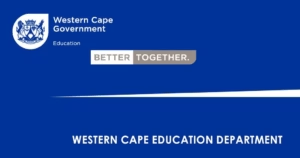Navigating the journey of adolescence comes with its fair share of trials and tribulations. In South Africa, one of the most prominent issues facing our youth today is the high rate of teenage pregnancies. This article aims to illuminate the contours of this critical issue, pulling back the curtain to reveal the prevalence, contributing factors, and the rippling impacts on individuals and society. We will delve into the government policies and community involvement aimed at curtailing this problem and highlight the crucial role of education. We’ll also spotlight several successful initiatives and strategies being used to combat teenage pregnancy in the country. Join us as we journey through the complex narrative of teenage pregnancy in South Africa, exploring how we can transform the lives of our youth for a brighter future.
Table of Contents
Introduction to Teenage Pregnancy in South Africa
Teenage pregnancy, defined as pregnancy occurring in young women aged between 15 and 19, is a significant concern in South Africa. It presents a critical health, social, and economic challenge that can perpetuate a cycle of poverty and inequality. While teenage pregnancy is a global issue, the rates in South Africa are considerably higher than in many other countries, making it a national priority.
Understanding and addressing teenage pregnancy requires a multifaceted approach, as its causes and consequences are deeply entwined with issues of education, poverty, gender inequality, and health. This article delves into these complexities, providing an overview of the prevalence, contributing factors, impacts, and strategies for combating teenage pregnancy in South Africa.
The Prevalence of Teenage Pregnancy: A Snapshot
In South Africa, the rates of teenage pregnancy are alarmingly high. According to the most recent data, approximately 16% of women aged 15-19 have begun childbearing. These numbers are even higher among certain demographics, such as lower-income households and rural communities.
The stark figures underline the magnitude of the challenge. High teenage pregnancy rates can have profound implications, not only for the individual young women and their children but also for society at large. Reducing teenage pregnancy is therefore a critical goal for public health, education, and social justice.
Factors Contributing to Teenage Pregnancy
Teenage pregnancy in South Africa is influenced by a myriad of factors. Socioeconomic conditions play a significant role, with poverty and inequality often linked to higher rates of teenage pregnancy. Lack of education and limited access to sexual health services also contribute.
Cultural and societal factors are also at play. Gender norms and expectations, societal attitudes towards teenage sex and parenthood, and the influence of peers and family can all impact teenage pregnancy rates. In some cases, sexual violence and exploitation also contribute to the problem.
Impacts of Teenage Pregnancy on the Individual and Society
The impacts of teenage pregnancy are far-reaching. For the young women involved, it can lead to an abrupt end to education, limiting their future employment prospects and perpetuating cycles of poverty. It also poses health risks, as teenage mothers are more likely to experience complications during pregnancy and childbirth.
For society, the costs are also substantial. High teenage pregnancy rates can strain health, social, and educational services. It can also contribute to intergenerational cycles of poverty, as children born to teenage mothers are more likely to experience poverty, lower education levels, and poor health outcomes.
Government Policies and Interventions to Combat Teenage Pregnancy
In response to the high rates of teenage pregnancy, the South African government has implemented various policies and interventions. These include efforts to improve access to contraceptives and sexual health services, campaigns to raise awareness about the risks of teenage pregnancy, and programs to support pregnant teenagers and young mothers.
The Department of Basic Education has also introduced measures to encourage pregnant teenagers to continue their education. These include policies to prevent the exclusion of pregnant students and programs to support young mothers in returning to school after childbirth.
Role of Education in Preventing Teenage Pregnancy
Education plays a vital role in preventing teenage pregnancy. By ensuring that young people have a thorough understanding of sexual health and reproduction, they can make informed decisions and engage in safe behaviors. It’s important that this education is comprehensive, age-appropriate, and culturally sensitive.
Beyond sexual education, keeping girls in school can also reduce teenage pregnancy rates. Education provides opportunities and opens doors, giving young women alternatives to early motherhood. It can also foster empowerment, self-esteem, and ambition, all of which can contribute to lower teenage pregnancy rates.
Community Involvement and Support in Tackling Teenage Pregnancy
Community involvement is crucial in tackling teenage pregnancy. Community leaders, families, and peers all have a role to play in supporting young people and fostering an environment that discourages early pregnancy. This can involve challenging harmful gender norms, encouraging open dialogue about sexual health, and providing support and resources for young people.
Community-based initiatives, such as mentorship programs, youth clubs, and support groups, can also make a difference. These initiatives can provide young people with safe spaces to discuss their experiences and concerns, learn about sexual health, and access support and resources.
The Importance of Sexual Health and Reproductive Rights Education
Comprehensive sexual health and reproductive rights education is key to reducing teenage pregnancy. Such education should cover not just the biological aspects of reproduction, but also issues of consent, relationships, contraception, and the social and economic implications of early pregnancy.
Access to accurate and unbiased information empowers young people to make informed decisions about their sexual health. It can also challenge harmful myths and misconceptions, promote safe behaviors, and encourage the use of contraception.
Case Studies: Successful Initiatives in Combating Teenage Pregnancy
There are numerous examples of successful initiatives to combat teenage pregnancy in South Africa. For example, the “She Conquers” campaign, launched by the South African National AIDS Council, aims to reduce teenage pregnancy and HIV infection rates by promoting education and economic opportunities for young women.
Another example is the “Caring Schools” project, which involves schools in efforts to reduce teenage pregnancy and improve educational outcomes. This involves not only sexual health education but also creating supportive environments for pregnant students and young mothers.
Future Strategies and Recommendations
Looking to the future, a multipronged strategy is needed to further reduce teenage pregnancy in South Africa. This includes ongoing efforts to improve access to contraceptives and sexual health services, comprehensive sexual health education, and initiatives to keep girls in school.
Engaging communities in efforts to prevent teenage pregnancy is also crucial. This means working with community leaders, families, and young people themselves to promote safe behaviors, challenge harmful norms, and provide support for young people.
Conclusion
In conclusion, combating teenage pregnancy in South Africa is a complex and multifaceted challenge. It requires concerted efforts across sectors, from health and education to social development and community engagement. While there is still much work to be done, the experiences and successes so far offer valuable lessons and hope for the future. By continuing to prioritise this issue, we can work towards a future where all young women in South Africa have the opportunity to thrive and fulfill their potential.
















